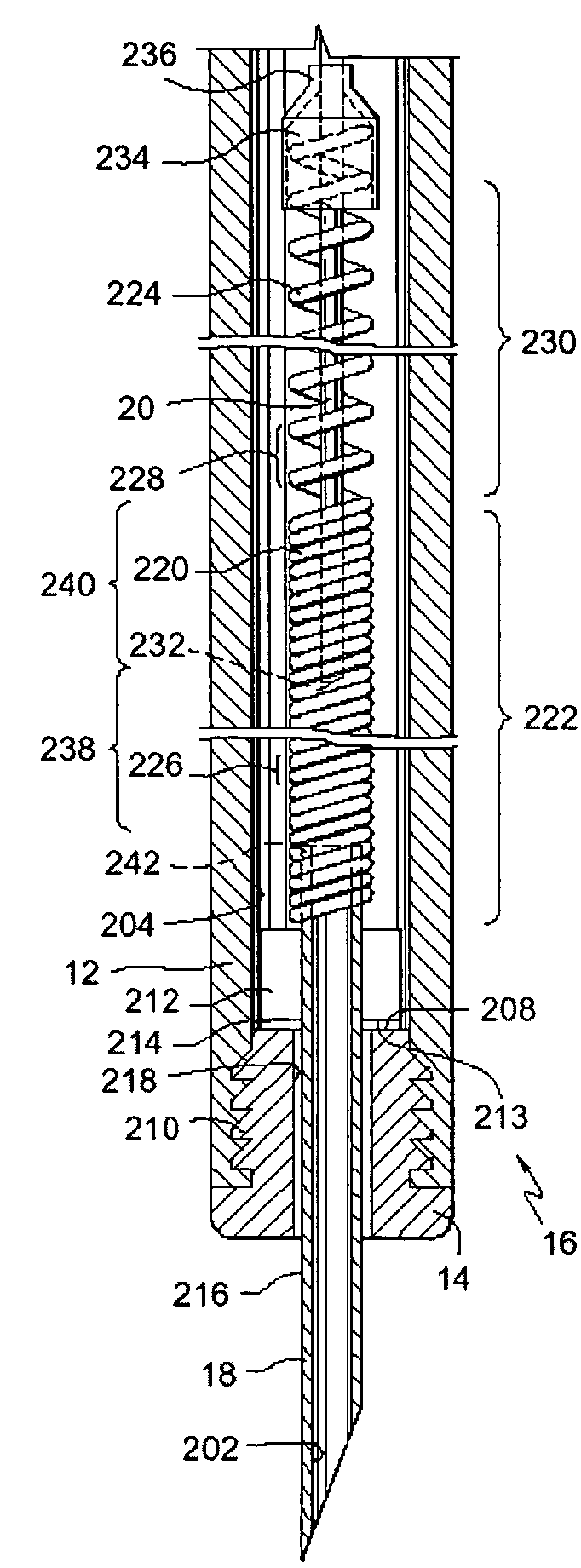Transendoscopic needle assembly
a needle and endoscope technology, applied in the field of transendoscopic needle assembly, can solve the problems that the flexible needle assembly conventions have not provided satisfactory means for balancing the necessary flexibility, and achieve the effect of increasing rigidity
- Summary
- Abstract
- Description
- Claims
- Application Information
AI Technical Summary
Benefits of technology
Problems solved by technology
Method used
Image
Examples
Embodiment Construction
[0015] The present invention is directed to a medical device, which includes a flexible outer tubular member, e.g., a flexible catheter, having proximal and distal ends. As used herein, the proximal end of a component of the medical device is the end closest to the administering physician during normal use, and the distal end is the end of the component farthest away from the administering physician, e.g., the end closest to the target site, during normal operation. A flexible inner member is slidably and coaxially received within the outer tubular member. The inner member includes a flexible member, e.g., a flexible stylet, housed within the proximal end of the outer tubular member; a first spring member or section having proximal and distal ends and being oriented adjacent the distal end of the outer tubular member; and a second spring member or section oriented between the stylet and the first spring section. A retractable hollow needle member is coupled to the distal end of the ...
PUM
 Login to View More
Login to View More Abstract
Description
Claims
Application Information
 Login to View More
Login to View More - R&D
- Intellectual Property
- Life Sciences
- Materials
- Tech Scout
- Unparalleled Data Quality
- Higher Quality Content
- 60% Fewer Hallucinations
Browse by: Latest US Patents, China's latest patents, Technical Efficacy Thesaurus, Application Domain, Technology Topic, Popular Technical Reports.
© 2025 PatSnap. All rights reserved.Legal|Privacy policy|Modern Slavery Act Transparency Statement|Sitemap|About US| Contact US: help@patsnap.com



